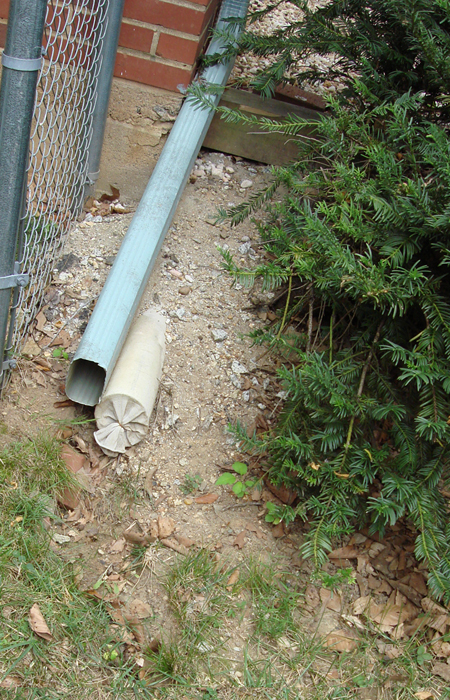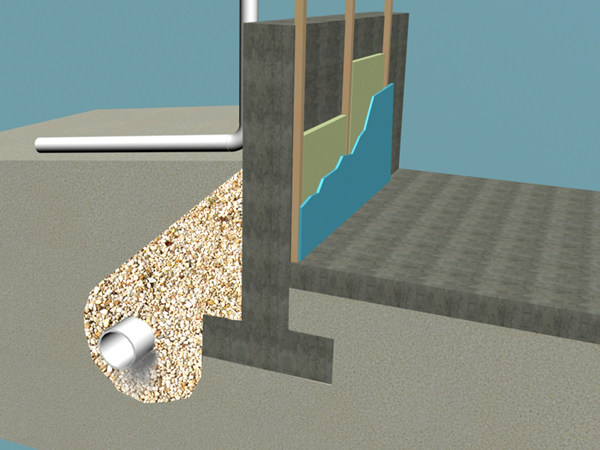Since the foundation is something that needs to be installed by an expert contractor,
and not much can be done with it after it is placed, only a few tips are provided
below. Although few, they are crucial.
No matter what type of foundation you select, keep it as dry as possible.
FOUNDATIONS FOR PASSIVELY CONDITIONED HOMES
Foundations can act as a heat escape and damage the efficiency of a passively
heated home.
*Most foundations are made out of concrete:
Fly-Ash Concrete. Fly ash is a waste product from coal-fired
power plants and instead of being dumped in landfills, it can be used as a substitute
for 15 to 30 percent of the Portland cement in concrete, thus the name fly-ash
concrete. Fly-ash concrete is smoother, denser, more workable, and less permeable
than conventional concrete and is widely available.
Concrete or Concrete Blocks offer little or no insulation.
Filling the cores with polystyrene beads and vermiculite, heat flows through the
mortar joints (bridging loss). It is best to build a block wall and apply internal
or external foam insulation to the foundation wall.
*Some better alternatives are the Faswall block Rastra block:
Faswall Block consists of concrete and wood particles (waste
products) molded into blocks. They are lightweight and thus relatively easy to
work with. As with ordinary concrete blocks, insulation is required to reduce
heat loss.
Rastra Block is made from cement and recycled plastic and
can also be used to build foundations and walls. Rastra blocks are lightweight
and easy to handle and can be cut easily with a saw.
Blog: http://www.rastra.com
And http://www.faswall.com
Insulating Concrete or Concrete Block Foundations 
Basement walls, Stem walls and slab-on-grade foundations are usually insulated
with 4" thick rigid foam, inside, or outside.
For more info, see http://www.reflectixinc.com/basepage.asp?PageIndex=729
External insulation may be open to the environment and subject to damage. Termites
and other insects may eat their way into foam to the rest of the house, reducing
the R-value of the insulation. Internal insulation is becoming more and more popular
and effective as long as external moisture protection has been applied.
Keep the foundation as dry as possible! Wet earth around a home acts as
a giant heat sink. Moisture in wet soil may be drawn into the walls of a home,
where it can dampen  and
damage the insulation due to mold and mildew, eventually causing framing members
and sheathing to rot, leading to structural damage.
and
damage the insulation due to mold and mildew, eventually causing framing members
and sheathing to rot, leading to structural damage.
A sloped, well-drained site or grading-sloping the ground away from the foundation
is the most effective and easy way to create a dry foundation.
If a slope is directed toward a home, it is best to create earthen dams or French
drains (a rock-filled trench with porous pipe or tile running along the bottom,
which is pitched to drain by gravity away from the house - Filter fabric is typically
placed over the pipe to prevent sediment from dogging the openings in the pipe)
channeled around the house to divert the water. It will help to have trees or
shrubbery planted to soak up the water. 
Underground drainpipes can also be installed to transport water away from a house.
Drainpipes are typically daylighted, that is, allowed to empty on the surface
of the ground at least twenty feet away from the house. Incidentally, the outlet
of a drainpipe should be at least 6 feet long and could be routed to underground
cisterns to irrigate lawns and gardens. (More on rainwater)
More PDF: Insulation basement, Insulation
Slab

